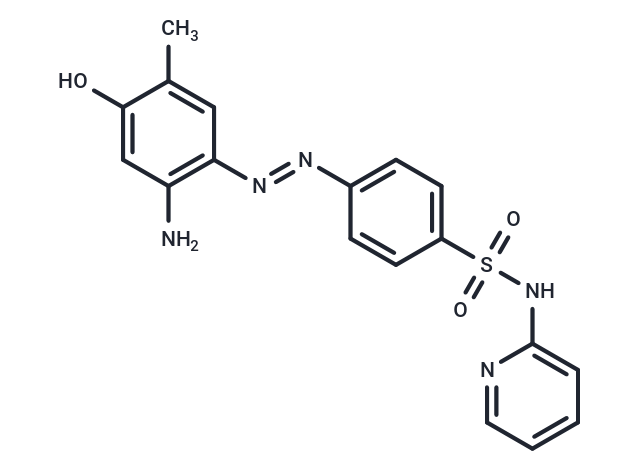Shopping Cart
- Remove All
 Your shopping cart is currently empty
Your shopping cart is currently empty

MS436 is a selective, small-molecule inhibitor for the BRD4 bromodomains.

| Pack Size | Price | Availability | Quantity |
|---|---|---|---|
| 2 mg | $37 | In Stock | |
| 5 mg | $59 | In Stock | |
| 10 mg | $105 | In Stock | |
| 25 mg | $203 | In Stock | |
| 50 mg | $363 | In Stock | |
| 100 mg | $531 | In Stock | |
| 500 mg | $1,150 | In Stock | |
| 1 mL x 10 mM (in DMSO) | $66 | In Stock |
| Description | MS436 is a selective, small-molecule inhibitor for the BRD4 bromodomains. |
| Targets&IC50 | BRD4(2):0.34 μM(Ki), BRD4(1):<0.085 μM(Ki) |
| In vivo | MS436 exhibits low nanomolar affinity (Ki=30-50 nM) for the first bromodomain of BRD4. In mouse macrophages with NF-κB-directed expression, MS436 inhibits BRD4 activity, reducing the levels of NO and IL-6. |
| Kinase Assay | Fluorescence Anisotropy Binding Assay: Binding affinity of the newly synthesized diazobenzene compounds for various bromodoamins is assessed in a fluorescence anisotropy competition assay using a fluorescein isothiocyanate (FITC)-labeled MS417 as an assay probe. Competition experiments are performed with a BrD protein (0.25–1 μM) and the fluorescent probe (80 nM), and increasing concentration of unlabeled competing ligand in a PBS buffer (pH 7.4) in total volume of 80 μL Measurements are obtained after a 1 hour incubation of the fluorescent ligand and the protein at 25°C with Safire 2 microplate reader. In a competition-binding assay, fluorescent ligand concentration is ≤ 2Kd, and protein concentration was set at which 50-80% of fluorescent ligand is bound. Dissociation constant of a competing ligand is calculated with the correction to Cheng-Prussoff equation introduced by Nicolovska-Coleska and colleagues. Assuming one-site competitive binding model, the equation used to calculate Ki's from IC50 values recovered from fitting data using Prism. |
| Cell Research | Murine macrophage RAW264.7 cells are plated at a density of 10000 cells per well in a 96-well plate and incubated at 37 °C for 18 h. The cells are then treated with the diazobenzene bromodomain inhibitors up to 100 μL for 24 hours. At the end of the 24 hr incubation, 10 μL of the MTT solution (4 mg/ml) is added to each well and incubated at 37°C for 4 h. The supernatants are then removed and the cells were solubilized in 100 μL of 100% DMSO. The diazobenzene compounds are first dissolved in DMSO then diluted with culture medium to concentrations that ranged from 0.28 to 50000 nM. The final concentration of DMSO is adjusted to 0.05% (v/v). The extent of the reduction is measured by the absorbance at 570/630 nm using EnVison 2104 Multilabel Reader.(Only for Reference) |
| Molecular Weight | 383.42 |
| Formula | C18H17N5O3S |
| Cas No. | 1395084-25-9 |
| Smiles | Cc1cc(\N=N\c2ccc(cc2)S(=O)(=O)Nc2ccccn2)c(N)cc1O |
| Relative Density. | 1.42 g/cm3 (Predicted) |
| Storage | Powder: -20°C for 3 years | In solvent: -80°C for 1 year | Shipping with blue ice. | |||||||||||||||||||||||||||||||||||
| Solubility Information | DMSO: 40 mg/mL (104.32 mM), Sonication is recommended. | |||||||||||||||||||||||||||||||||||
Solution Preparation Table | ||||||||||||||||||||||||||||||||||||
DMSO
| ||||||||||||||||||||||||||||||||||||

Copyright © 2015-2025 TargetMol Chemicals Inc. All Rights Reserved.